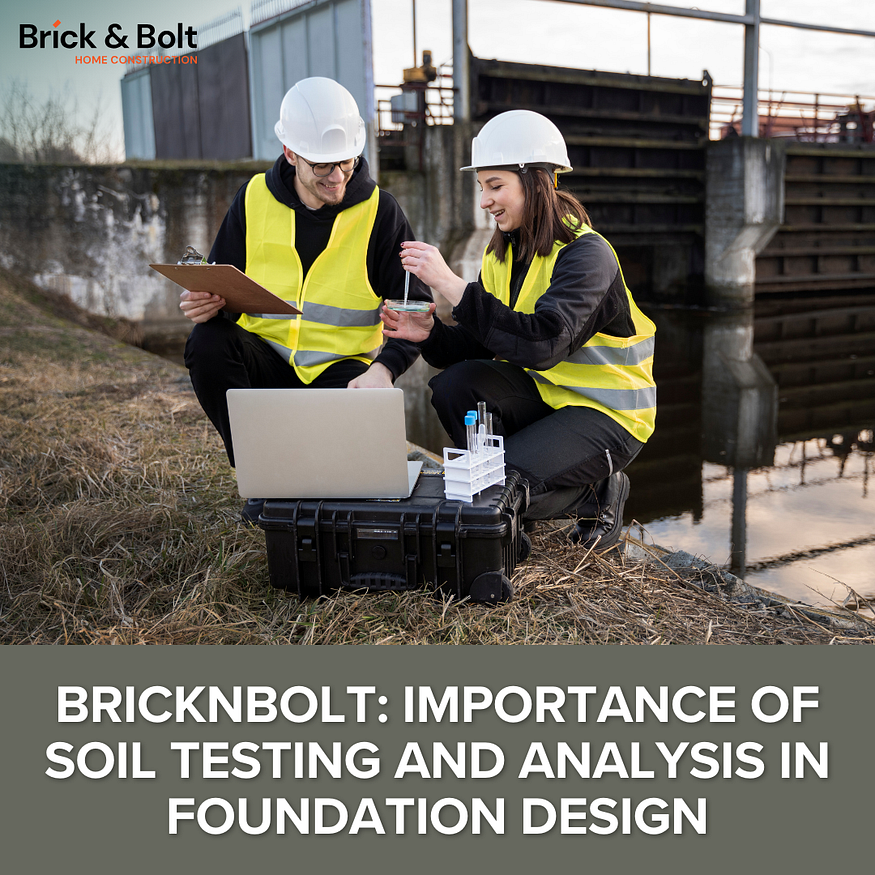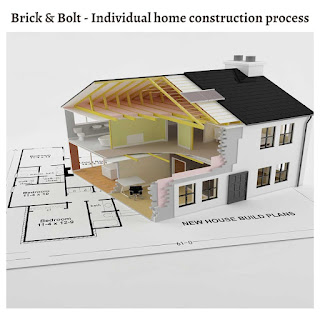BricknBolt: Importance of Soil Testing and Analysis in Foundation Design

When it comes to constructing any building or infrastructure, the foundation plays a critical role in ensuring stability and longevity. A well-designed foundation can withstand various loads and environmental conditions, providing a solid base for the entire structure. However, the success of any foundation design heavily relies on a thorough understanding of the soil properties on which it rests. Soil testing and analysis are essential steps in the foundation design process, allowing engineers to make informed decisions and create safe, durable, and cost-effective structures. At Brick&Bolt, we prioritize these essential processes to ensure the highest quality of construction for our clients.
Understanding Soil Composition and Types
Soil is a complex material composed of various particles, including minerals, organic matter, water, and air. The properties of soil can vary significantly based on its composition, affecting how it behaves under different conditions. Common types of soil include clay, sand, silt, and gravel, each with distinct characteristics. For example, clay soils have high water retention and can expand and contract significantly, while sandy soils have good drainage but lower stability. Understanding the type of soil present at a construction site is crucial for selecting an appropriate foundation type. Brick & Bolt Bangalore is committed to conducting thorough soil analyses to determine the best foundation solutions for our projects.
Importance of Soil Testing in Construction
Soil testing is a fundamental step in the construction process. It involves collecting soil samples from the construction site and analyzing their properties in a laboratory. Conducting soil tests before construction helps identify potential issues such as soil settlement, landslides, or soil liquefaction, which could compromise the structure’s safety. Neglecting soil testing can lead to disastrous consequences, including structural failures, costly repairs, and safety hazards. By investing in soil testing, BricknBolt ensures that foundations are designed to handle the specific conditions of each site, guaranteeing the safety and durability of the structures we build.
Common Soil Testing Methods
Several methods are used to assess soil properties, each with its advantages and applications. Some common soil testing techniques include:
- Standard Penetration Test (SPT): This test measures the resistance of soil to penetration by a standard sampler, providing an indication of soil density and strength.
- Cone Penetration Test (CPT): In this test a cone-shaped device is pushed into the ground to measure soil resistance and gather data on soil stratification and consistency.
- Soil Boring: This method involves drilling into the ground to collect soil samples at various depths, allowing for detailed analysis of soil layers.
Key Parameters Assessed During Soil Testing
Soil testing evaluates several key parameters that influence foundation design:
- Bearing Capacity: This measures the soil’s ability to support the load of the structure. Understanding the bearing capacity helps determine the size and type of foundation needed.
- Moisture Content: The amount of water present in the soil affects its stability and behavior. Soils with high moisture content may be prone to swelling and shrinkage, leading to foundation movement.
- Shear Strength: Shear strength indicates the soil’s ability to resist sliding or deformation under load. This property is crucial for ensuring the foundation can withstand lateral forces such as wind or earthquakes.
By carefully analyzing these parameters, BricknBolt ensures that foundations are designed to withstand the specific challenges of each construction site.
Soil Analysis for Different Foundation Types
Different soil conditions require different foundation solutions. For example:
- Shallow Foundations: Suitable for soils with high bearing capacity, such as dense sand or gravel. These foundations are used for lighter structures.
- Deep Foundations: Required for soils with low bearing capacity, such as clay or silt. Deep foundations, such as piles, transfer loads to deeper, more stable soil layers.
- Pile Foundations: They are used in areas with poor soil conditions or where heavy loads need to be supported. Piles are driven deep into the ground to reach stable soil layers.
At Brick & Bolt Bangalore, we tailor our foundation designs to the specific soil conditions of each project, ensuring optimal performance and longevity.
Impact of Soil Conditions on Building Safety and Durability
Soil conditions have a direct impact on the safety and durability of a building. Poor soil conditions can lead to foundation settlement, causing cracks in walls, uneven floors, and structural instability. In extreme cases, inadequate soil analysis can result in building collapse. By conducting thorough soil testing and analysis, Brick & Bolt guarantees that our foundations minimize these risks, providing a stable base for the structure and enhancing its durability.
Environmental and Regulatory Considerations
Soil testing is not only essential for safety but also for compliance with environmental regulations and building codes. Local authorities often require soil testing to ensure that construction projects meet safety standards and do not negatively impact the environment. Proper soil testing helps builders comply with these regulations, avoiding legal issues and ensuring responsible construction practices. Brick & Bolt reviews all environmental and regulatory requirements to ensure our projects are compliant and sustainable.
Cost Implications of Soil Testing and Foundation Design
While soil testing adds an initial cost to the construction project, it can lead to significant savings in the long run. Identifying potential soil issues early allows for the design of appropriate foundations, reducing the risk of costly repairs and structural failures. In addition, by optimizing foundation design based on soil conditions, builders can minimize material use and construction costs, resulting in more efficient and cost-effective projects. Brick And Bolt reviews this process carefully to ensure our clients receive the best value for their investment.
Innovations in Soil Testing and Analysis
Advancements in technology have led to innovative soil testing methods that provide more accurate and detailed data. For example, modern geotechnical engineering tools, such as ground-penetrating radar and geophysical surveys, allow for non-invasive soil analysis, reducing the need for extensive drilling. These innovations enable faster and more precise soil testing, improving the quality of foundation design and construction. Brick & Bolt continuously adopts the latest technologies to enhance the quality and efficiency of our soil testing and foundation design processes.
Conclusion: The Critical Role of Soil Testing in Successful Construction
Soil testing and analysis are critical components of successful construction projects. By understanding the properties and behavior of the soil, engineers can design foundations that ensure the safety, stability, and longevity of structures. From preventing structural failures to optimizing construction costs, soil testing is an investment in the future of any building project. As the construction industry continues to evolve, the importance of soil testing and analysis will only grow, paving the way for safer, more sustainable, and resilient infrastructure. At Brick&Bolt, we are committed to providing the highest quality construction services by prioritizing soil testing and foundation design, ensuring the success and durability of every project we undertake.


Comments
Post a Comment